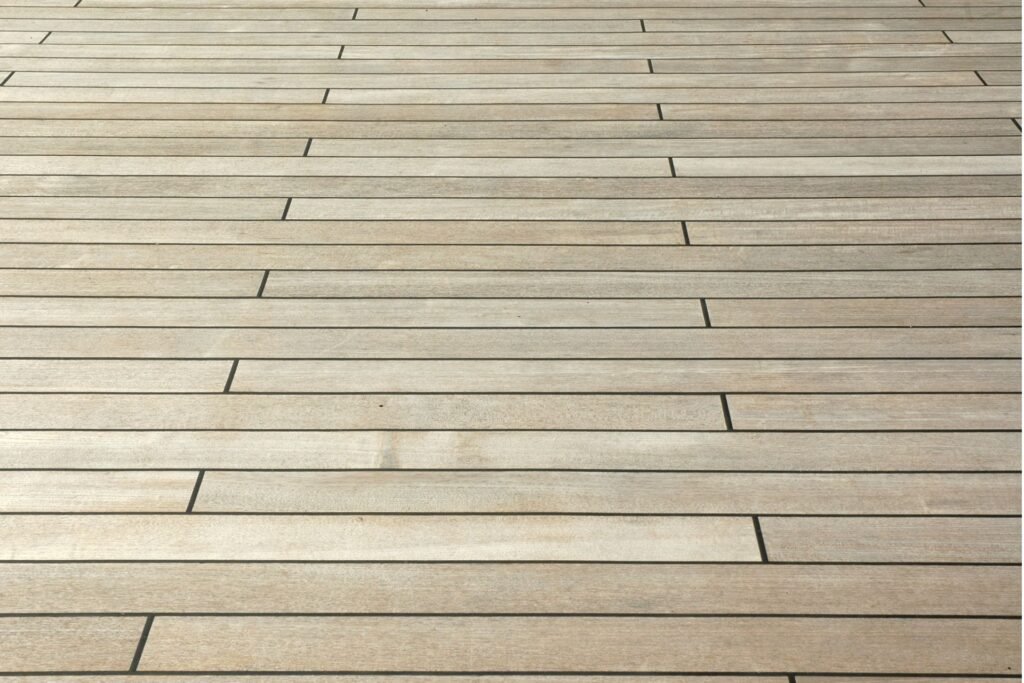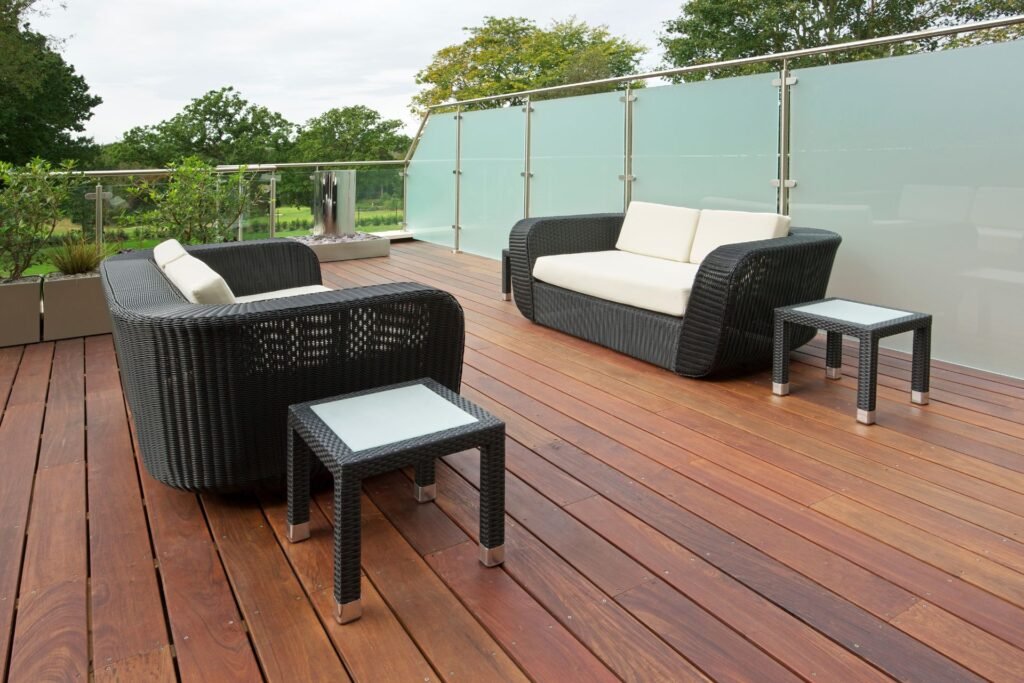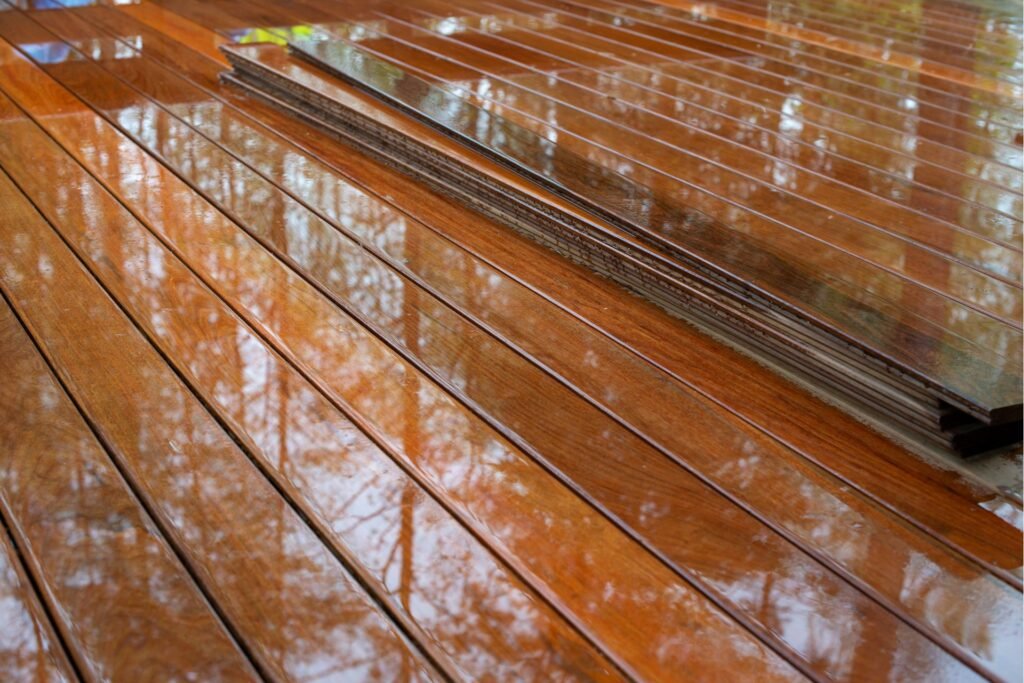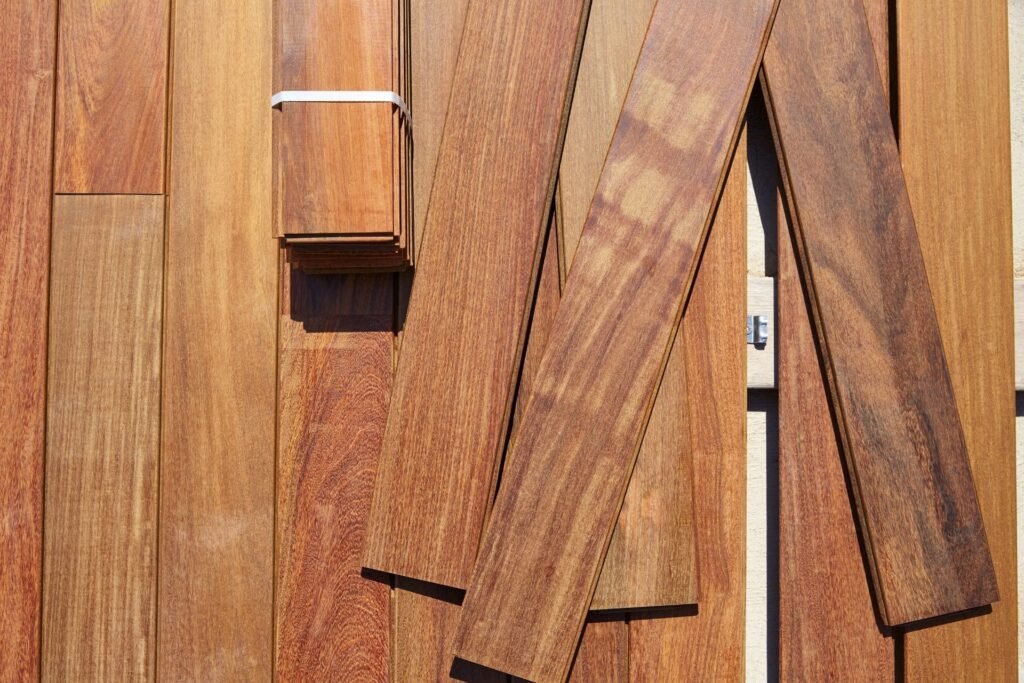
Ultimate Guide To Cheapest Decking Timber Australia
Welcome to your ultimate guide to finding the cheapest decking timber in Australia without skimping on quality. Whether you’re planning to renovate your outdoor space or embark on a brand-new decking project, the cost of materials undoubtedly plays a significant role in your decision-making process. However, navigating the maze of options available can be daunting, especially when you’re looking for that perfect blend of affordability, durability, and aesthetic appeal. In this comprehensive guide, we’ll dive deep into the world of decking timber, exploring the various types available on the Australian market, factors that influence pricing, and how to get the best value for your money. From the lush, dense forests of Jarrah to the cost-effective and versatile Treated Pine, we’ll uncover the secrets to choosing the right decking timber that won’t break the bank. Prepare to arm yourself with the knowledge needed to make informed decisions and create a stunning outdoor oasis that reflects both your style and budget.
Looking for the cheapest decking timber in Australia without compromising on quality? Treated Pine emerges as a top contender, known for its cost-effectiveness and versatility. Ideal for budget-conscious homeowners, Treated Pine is treated to resist decay, termites, and fungi, making it a durable option for your decking needs. While other options like Merbau and Jarrah offer durability and aesthetic appeal, they can come at a higher cost. For those seeking an affordable solution, Treated Pine provides a practical balance between price and performance, ensuring your deck remains both beautiful and within budget. Explore local suppliers and seasonal discounts for the best deals, and consider sustainability and ethical sourcing to make an informed choice.
Understanding Decking Timber
Types of Decking Timber Available in Australia
Australia’s rich biodiversity and access to global timber markets offer a variety of decking timbers suited to the diverse Australian climate and aesthetic preferences. Among the most sought-after are Merbau, Treated Pine, Jarrah, and Spotted Gum. Each timber type brings its unique charm and functionality to outdoor spaces, making the choice of decking material a crucial decision for homeowners.
Merbau: Known for its rich, reddish-brown color, Merbau is a durable hardwood that stands up well against the elements, making it ideal for outdoor use. It’s resistant to decay and termites, which contributes to its longevity. Merbau’s vibrant color and durability come with a mid to high price tag, reflecting its quality and demand.
Treated Pine: As a cost-effective option, treated pine caters to budget-conscious homeowners who don’t want to compromise on quality. The timber is treated with preservatives, enhancing its resistance to decay and pests. It’s versatile and can be stained or painted to match any design aesthetic. The affordability of treated pine makes it a popular choice for large-scale projects.
Jarrah: Jarrah’s distinctive deep red hue and exceptional durability make it a premium decking material. It’s highly resistant to weather, rot, and termites, which ensures a long-lasting deck with minimal maintenance. Jarrah’s superior quality is reflected in its price, positioning it in the higher price bracket.
Spotted Gum: Celebrated for its strength and natural beauty, Spotted Gum features a range of colors from pale browns to deep reds. It’s a hardy timber that handles the harsh Australian climate well, with high resistance to decay and pests. Spotted Gum’s aesthetic appeal and durability make it a preferred choice for those looking for quality and natural elegance.
Factors Influencing Timber Prices
The cost of decking timber in Australia is influenced by several factors, each playing a significant role in the final price homeowners pay.
Availability: Local availability of timber species directly affects the price. Locally sourced timbers like Jarrah and Spotted Gum tend to be more affordable compared to imported ones due to lower transportation and logistic costs.
Import Taxes: For exotic timber species not native to Australia, import taxes can significantly increase costs. The government’s regulations and tariffs on imported goods are designed to protect local industries but can lead to higher prices for foreign timber types.
Quality Standards: The Australian Standard for decking materials ensures that only high-quality timber makes it to the market. Timber that meets these stringent standards often comes at a premium price due to the additional processing and certification required.
Understanding the various types of decking timber available in Australia and the factors that influence their prices can help homeowners make informed decisions when selecting materials for their outdoor projects. With a range of options catering to different budgets, aesthetic preferences, and durability requirements, there’s a decking solution for every Australian home.
By delving into the specifics of each timber type and the economic dynamics at play, this guide aims to equip readers with the knowledge needed to choose the right decking material for their needs, blending practicality with the natural beauty of timber.

Why Choose The Cheapest Decking Timber?
When it comes to home improvement, especially outdoor decking, the choice of material plays a pivotal role in both the aesthetic and functional appeal of your outdoor space. While there are numerous options available, selecting the cheapest decking timber can be a wise decision for many homeowners. This section delves into why opting for the most cost-effective timber for your decking could be beneficial, focusing on budget considerations and the crucial balance between cost and quality.
Budget Considerations in Home Improvement Projects
Budgeting is an essential aspect of any home improvement project. It not only defines the scope of the project but also ensures that resources are allocated efficiently. Choosing the cheapest decking timber can significantly impact your budget in several ways:
Upfront Cost Savings: The immediate advantage is the reduction in the initial investment required. This can be particularly appealing for homeowners working within tight financial constraints.
Allocation of Resources: Savings gained from selecting a less expensive decking material can be redirected towards other aspects of the project or even towards enhancing the quality of the decking through better finishes or additional features.
Long-Term Planning: For homeowners who view their decking project as a stepping stone to larger renovations, opting for a more affordable timber can serve as a cost-effective solution in the short term, allowing for future upgrades when the budget permits.
Understanding the impact of your choice on the overall budget is crucial. It’s not just about the cost of the materials but also about managing your resources wisely to achieve the best possible outcome for your home.
Balancing Cost with Quality and Durability
The common dilemma faced by many homeowners is finding the right balance between affordability and quality. Here are some insights into how you can achieve this balance when choosing decking timber:
Research is Key: It’s important to understand that the cheapest decking timber might not always mean inferior quality. Some timber types offer great durability and aesthetic appeal at a lower cost due to their availability or lower demand.
Consider Lifespan and Maintenance Cost: The initial cost is just one part of the equation. Consider the longevity of the material and the maintenance required over its lifetime. Sometimes, a slightly more expensive option may prove to be more cost-effective in the long run due to lower maintenance needs.
Expert Opinions Matter: Consulting with professionals or those with experience in decking can provide valuable insights into how different materials perform over time. This can help you make an informed decision that balances cost with the quality and durability of your decking.
In conclusion, choosing the cheapest decking timber requires careful consideration of both your budget and the long-term value of the material. By prioritizing affordability without compromising on quality and durability, you can create a beautiful and functional outdoor space that meets your financial and aesthetic needs. Remember, the goal is to make an informed choice that aligns with your overall home improvement objectives, ensuring satisfaction and enjoyment of your outdoor space for years to come.

Top Affordable Decking Timber Options In Australia
Creating an appealing and durable deck doesn’t mean you have to empty your wallet. Australia, with its diverse climate and outdoor lifestyle, offers several affordable decking timber options that blend quality, aesthetics, and value. In this section, we dive into the top budget-friendly choices for your decking needs.
Treated Pine
Treated Pine stands out as a cost-effective decking material favored by many Australian homeowners. The affordability of Treated Pine is one of its most appealing attributes, but the benefits don’t stop there. This timber undergoes a treatment process that enhances its durability, making it resistant to rot, decay, and termites – common concerns in Australia’s sometimes harsh climate. It’s a versatile choice that can be stained or painted to match any aesthetic, offering flexibility for various design visions. However, it’s essential to consider that while treated pine is durable, its longevity might not rival that of more premium timbers. Regular maintenance and a good understanding of its treatment chemicals are crucial for ensuring it remains a safe and sustainable option for your home.
Merbau (Where Applicable)
Merbau is another excellent choice for decking, especially for those prioritizing longevity and aesthetic appeal alongside affordability. Native to the Indo-Pacific region, Merbau is well-loved for its rich, dark color that can add warmth and elegance to any outdoor space. It’s not just about looks; Merbau’s natural oils and dense composition make it highly resistant to weathering, termites, and rot. This durability means it can be a more cost-effective option in the long run, despite being pricier upfront compared to materials like treated pine. The key to making the most of Merbau’s value is to ensure its sustainability and legality, as it has been subject to overharvesting in the past.
Composite Options
For those looking for an alternative to traditional timber, composite decking presents a viable option. Composite materials, made from a blend of wood fibers and recycled plastics, offer the aesthetic of timber without extensive maintenance. They’re resistant to fading, staining, and rotting, requiring just a simple wash to keep them looking new. While initially more expensive than some timber options, their longevity and low maintenance requirements can make them a more cost-effective choice over time. Composite decking is particularly appealing for cost-conscious consumers who prioritize sustainability and ease of care.
Where to Find Deals
Finding the best deals on decking materials requires a bit of research and timing. Local suppliers often have sales or discounts, especially during off-peak seasons when demand is lower. Bulk buying can also lead to significant savings, making it a good option if you’re decking a large area or collaborating with neighbors on similar projects. Keep an eye out for clearance sales and don’t shy away from negotiating with suppliers. Sometimes, manufacturers offer discounts on discontinued lines or slight seconds that can be perfect for your needs at a fraction of the cost.
Decking your home in Australia doesn’t have to be prohibitively expensive. By choosing materials like Treated Pine, Merbau, or composite options, you can create a stunning outdoor space that meets your budget and lasts for years. Remember, the key to finding the best deals lies in thorough research, considering both the upfront costs and the long-term value of your decking materials.
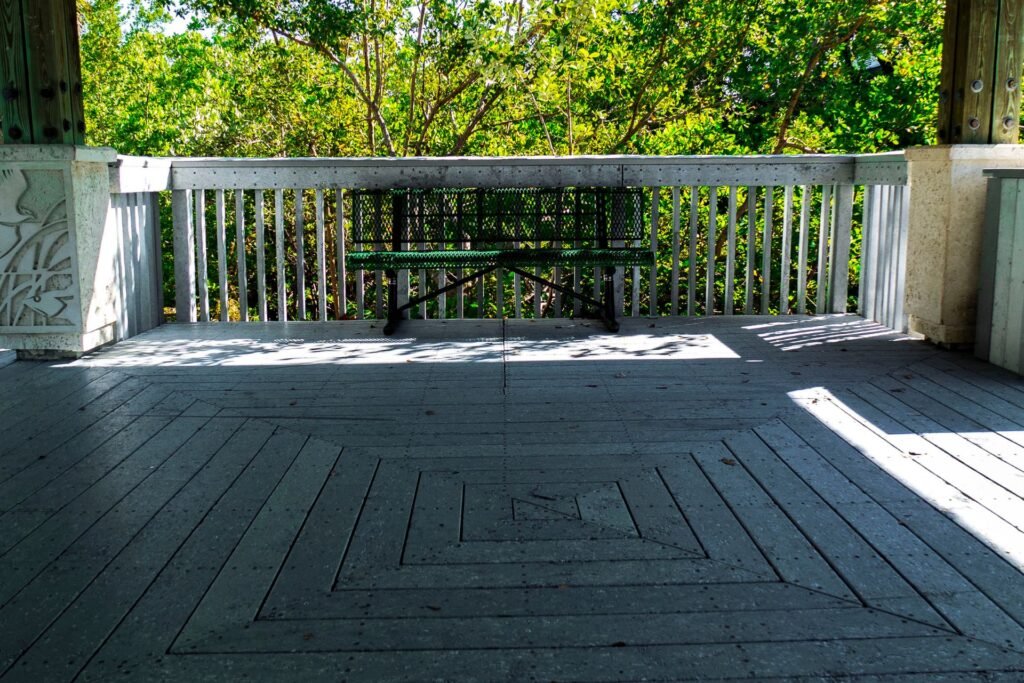
Maximizing Your Decking Investment
When it comes to enhancing your outdoor living space, decking is a popular choice that adds beauty, functionality, and value to your home. However, making the most of your decking investment involves careful consideration of materials, maintenance, and installation options. In this section, we’ll delve into longevity tips for more affordable timber options and weigh the pros and cons of DIY versus professional installation, ensuring that you’re equipped to make informed decisions that maximize the value of your decking project.
Longevity Tips for Cheaper Timber
Opting for more affordable timber for your decking doesn’t mean you have to compromise on durability and longevity. With the right maintenance strategies, you can significantly extend the life of your decking material, ensuring it remains beautiful and functional for years to come. Here are some essential maintenance tips to consider:
Regular Cleaning: Keeping your deck clean is crucial to prevent the buildup of dirt, grime, and other substances that can wear down the timber. A gentle wash with a soft brush and appropriate cleaning solution can do wonders.
Sealing and Staining: Apply a high-quality sealant to your deck to protect it from water damage, which is a primary cause of timber degradation. Staining can also provide an additional layer of protection and enhance the natural beauty of the wood.
Prompt Repairs: Addressing any signs of damage or wear, such as splintering, cracking, or loose boards, as soon as they appear can prevent further deterioration and extend the lifespan of your deck.
Protection from Elements: Consider adding a cover or awning to shield your deck from excessive sunlight and rain, which can cause fading, warping, and water damage over time.
By adhering to these maintenance tips, you can enjoy a beautiful and durable deck without breaking the bank on more expensive timber options.
DIY vs. Professional Installation Costs
When it comes to decking installation, homeowners often face the dilemma of choosing between a DIY approach and hiring a professional. Both options have their advantages and potential savings, but the right choice depends on various factors, including skill level, time availability, and budget.
DIY Installation: For those with a knack for hands-on projects and access to the necessary tools, DIY decking installation can offer significant cost savings. Not only do you save on labor costs, but you also have the flexibility to work at your own pace and make adjustments as needed. However, it’s important to have a solid understanding of the project requirements and potential challenges, as mistakes can lead to additional costs and delays.
Professional Installation: Hiring a professional installer may come with a higher upfront cost, but it offers the peace of mind that comes with expert craftsmanship and experience. Professionals can ensure that your deck is installed correctly and efficiently, adhering to local building codes and regulations. Additionally, many contractors offer warranties on their work, providing added protection for your investment.
In summary, the decision between DIY and professional decking installation should be based on a careful assessment of your skills, time, and budget. While DIY can offer cost savings and a sense of accomplishment, professional installation ensures expertise and efficiency, potentially saving you time and hassle in the long run.
Maximizing your decking investment requires thoughtful consideration of material maintenance and installation choices. By following these tips for extending the longevity of cheaper timber and carefully weighing the DIY versus professional installation options, you can enjoy a beautiful, durable deck that enhances your outdoor living space for years to come.

Legal And Environmental Considerations
When embarking on any decking project, understanding the legal and environmental considerations is not just a matter of due diligence it’s a commitment to quality, sustainability, and respect for the law. In Australia, where the great outdoors is an integral part of our lifestyle, choosing the right materials for your decking involves navigating through a set of standards and ethical considerations. Let’s delve deeper into these aspects to ensure your decking project is not only beautiful but also responsible and compliant.
Compliance with Australian Standards
In Australia, the construction and material selection for decking are governed by a series of standards designed to ensure safety, durability, and environmental responsibility. These standards cover a broad range of considerations, from the type of timber used to the methods of construction.
The Australian Standards for decking timber, primarily AS 3959, detail the requirements for building in bushfire-prone areas, including the selection of timber that can withstand the harsh conditions. Additionally, AS 1684 provides comprehensive guidelines on residential timber-framed construction, ensuring your decking is built to last under Australian conditions.
Understanding these standards is crucial for anyone planning a decking project. They not only dictate the legal requirements for construction but also serve as a guide for choosing materials that are safe, durable, and suited to the Australian climate. Consulting with a professional who is versed in these standards can help you navigate the complexities and ensure your deck is compliant, giving you peace of mind and a space you can enjoy for years to come.
Sustainability and Ethical Sourcing
As consumers become increasingly aware of the environmental impact of their choices, sustainability, and ethical sourcing have taken center stage in the selection of decking materials. Choosing timber that is not only durable and beautiful but also responsibly sourced is a commitment to environmental stewardship.
Sustainability in timber sourcing means selecting wood from forests managed under stringent environmental, social, and economic standards. Look for timber certified by recognized organizations such as the Forest Stewardship Council (FSC) or Programme for the Endorsement of Forest Certification (PEFC). These certifications ensure the wood you choose comes from forests that are managed sustainably, protecting biodiversity, worker rights, and local communities.
Ethical sourcing extends beyond sustainability. It involves considering the entire supply chain of the timber, from the forest to your home, ensuring that every step meets high ethical standards. This includes fair treatment and compensation for workers, as well as practices that minimize environmental impact, such as reducing waste and emissions.
Incorporating ethically sourced and environmentally friendly timber into your decking project not only contributes to a healthier planet but also adds value to your home. It reflects a commitment to quality and responsibility that resonates with today’s environmentally conscious homeowners.
In conclusion, building a deck is an opportunity to extend your living space into the natural world, creating a place for relaxation and connection. By adhering to Australian standards and embracing sustainability and ethical sourcing, you ensure your decking project is not only compliant and durable but also contributes positively to the environment and society. These considerations are essential for anyone looking to create a space that is truly welcoming and aligned with the values of responsibility and sustainability.
Remember, consulting with professionals who understand these legal and environmental considerations can greatly simplify the process, ensuring your decking project is built to last, compliant, and environmentally responsible.

Final Tips Before You Buy
When preparing to enhance your outdoor living space with timber decking, it’s crucial to approach the purchase with a well-informed mindset. In this section is designed to equip you with the knowledge and tools you need to make an informed decision. Here’s a breakdown of what to expect and how to use this section to your advantage.
Checklist for Timber Decking Purchase
Before taking the plunge into buying timber for your decking project, it’s beneficial to have a comprehensive checklist to ensure that you’re considering all the essential factors. This checklist isn’t just a tool; it’s your roadmap to making a purchase that aligns with your needs, values, and budget. Here are the key elements to keep in mind:
Quality: The longevity and appearance of your decking will significantly depend on the quality of the timber you choose. Look for timber that’s durable, well-treated, and comes with a grade that signifies its quality. High-quality timber might come at a premium, but it’s an investment in the longevity and beauty of your decking.
Price: While it’s tempting to opt for the cheapest option, the price should be weighed against quality and sustainability. A moderately higher upfront cost can lead to lower maintenance and replacement expenses in the long run. Always compare prices from different suppliers to ensure you’re getting a fair deal.
Sustainability: In today’s world, the environmental impact of our choices has never been more critical. Opt for timber sourced from sustainably managed forests, certified by reputable organizations such as the Forest Stewardship Council (FSC). This not only helps protect the environment but also ensures the longevity of your decking material.
Questions to Ask Suppliers
Armed with your checklist, the next step is to engage with suppliers. Asking the right questions can be the difference between a satisfactory purchase and a regrettable one. Here are some key questions to consider:
Warranty: “What kind of warranty do you offer on your timber decking?” A warranty can provide peace of mind and protection against unforeseen issues. It also reflects the supplier’s confidence in their product’s quality.
Installation Support: “Do you provide installation support or recommend contractors who are familiar with your products?” Even if you plan to DIY, having access to expert advice can ensure a smooth installation process.
Sustainability Credentials: “Can you provide documentation on the sustainability and origin of the timber?” This is crucial for ensuring that your decking is environmentally friendly and ethically sourced.
Aftercare Advice: “What maintenance and aftercare do you recommend for your timber decking?” Proper maintenance can significantly extend the life of your decking, so it’s important to follow the supplier’s recommendations.
By meticulously going through the checklist and asking these vital questions, you can ensure that you’re well-prepared to make a timber decking purchase that meets your expectations in terms of quality, sustainability, and value for money. Remember, the goal is not just to buy timber decking but to invest in your home’s future comfort, aesthetics, and sustainability.

FAQs: About The Cheapest Decking Timber Australia
Treated Pine is considered the most economical option due to its availability and the cost-efficient processes involved in its treatment and production. Its treatment for resistance against decay, termites, and moisture makes it a durable yet affordable choice for decking.
Yes, besides Treated Pine, other options like Merbau and Jarrah offer relatively good value, especially when considering their longevity and aesthetic qualities. However, their prices may be higher due to their superior durability and appearance.
To ensure good quality, source your timber from reputable suppliers who adhere to Australian standards. Look for timber that has been properly treated and ask for sustainability certifications where applicable.
Composite decking materials can be cost-effective in the long run due to their low maintenance requirements and durability. Initially, they might be more expensive than some timber options, but they could save money over time.
Treated Pine is durable and resistant to decay and pests due to its treatment. While naturally durable timbers like Merbau and Jarrah may have a longer lifespan, Treated Pine still offers significant durability, especially when properly maintained.
Treated Pine decking requires periodic cleaning and the application of a suitable decking oil or sealant every one to two years to maintain its appearance and longevity.
This depends on your skills and the complexity of the project. DIY installation can save on labor costs, but for complex designs or if you’re unsure about the process, hiring a professional is advisable to ensure quality and safety.
Yes, it’s important to ensure that your decking timber complies with local building codes and regulations. Additionally, consider choosing timber from sustainably managed forests to minimize environmental impact.
Look for local suppliers, compare prices, and check for seasonal sales or bulk purchase discounts. Building a good relationship with suppliers can also alert you to upcoming deals.
Ask about the timber’s source, treatment processes, durability, and warranty. Inquire about any certifications for sustainability and whether the timber meets Australian standards for decking materials.
Conclusion
As we conclude our guide on selecting decking timber, it’s crucial to emphasize the importance of finding the right balance between cost and quality a key to realizing your dream deck without compromising on aesthetics or breaking the bank. This comprehensive journey has equipped you with the knowledge to navigate through the plethora of options, making informed decisions that reflect both your vision and budget constraints. Remember, achieving the perfect deck is about blending functionality with style, ensuring longevity while staying within financial boundaries. We hope this guide serves as your roadmap, guiding you towards creating not just a deck but a cherished outdoor sanctuary that aligns with your lifestyle and financial plan. By prioritizing a harmonious balance between quality materials and cost-effectiveness, you’re set to embark on a journey that culminates in the deck of your dreams, one that’s built to last and resonates with your personal taste, one board at a time.
Menu
- About
- Blog
- Contact Us
- Deck Builders Blue Mountains
- Patio Builders Blue Mountains
- Patio Builders Penrith
- Pergola Builders Blue Mountains
- Pergola Builders Penrith
- Privacy Policy
- Sitemap
- Terms And Conditions
About the Author:
Mike Veail is a recognized digital marketing expert with over 6 years of experience in helping tradespeople and small businesses thrive online. A former quantity surveyor, Mike combines deep industry knowledge with hands-on expertise in SEO and Google Ads. His marketing strategies are tailored to the specific needs of the trades sector, helping businesses increase visibility and generate more leads through proven, ethical methods.
Mike has successfully partnered with numerous companies, establishing a track record of delivering measurable results. His work has been featured across various platforms that showcase his expertise in lead generation and online marketing for the trades sector.
Learn more about Mike's experience and services at https://theleadguy.online or follow him on social media:

